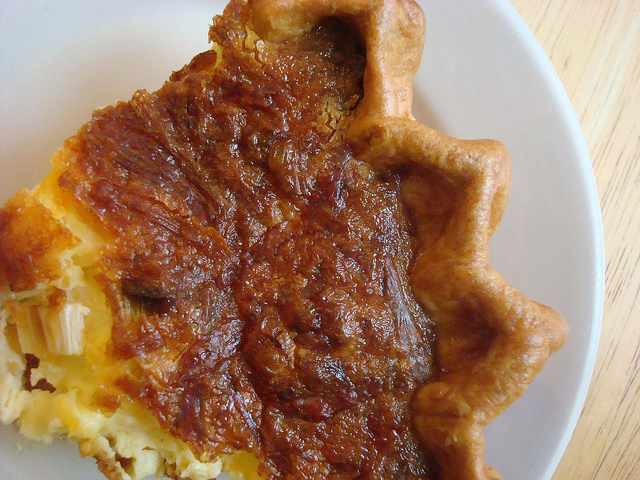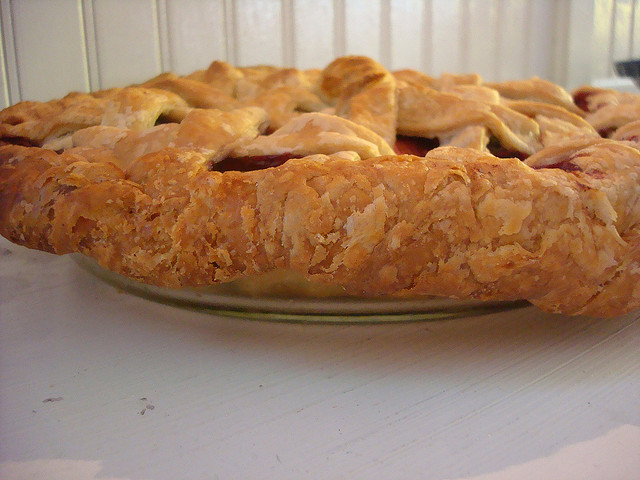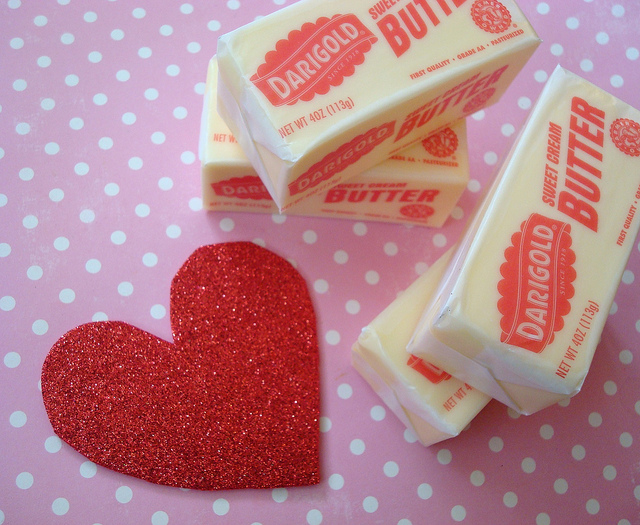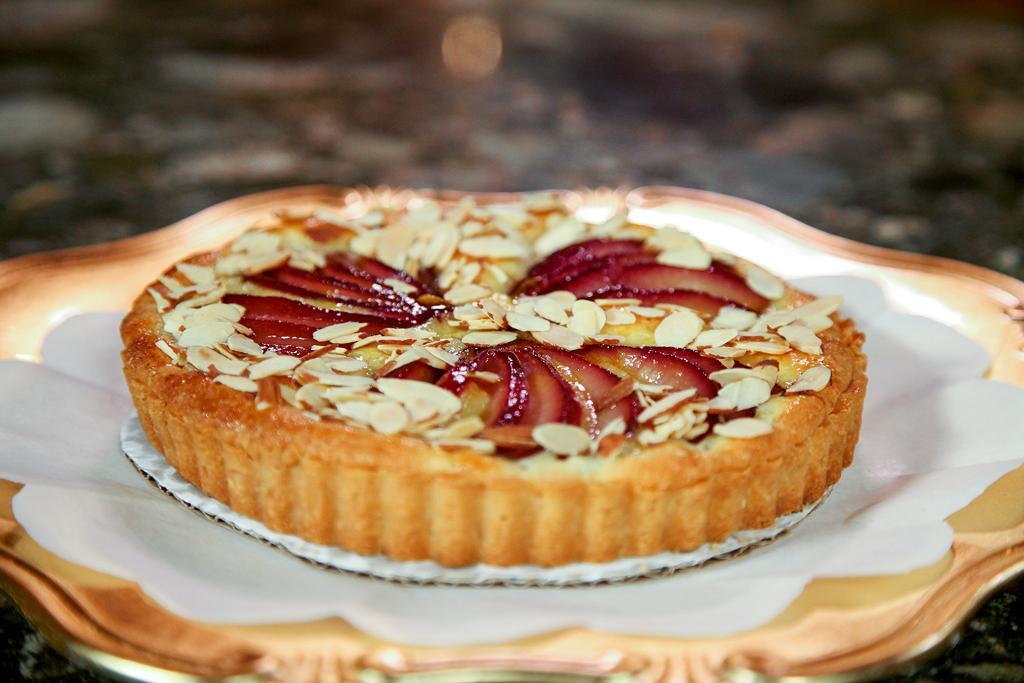Shortcrust pastry dough is a vital part of any pastry chef’s repertoire. It’s the building block of pastry crust for all manner of pies and tarts, both sweet and savory. It’s not difficult to get the hang of making shortcrust pastry, and perfecting it will serve you well in all sorts of cooking and baking projects, whether you’re a home cook or an aspiring pastry chef.
So let’s take a short but sweet (and a little savory) journey to the heart of the matter on shortcrust pastry.

Photo via CakeSpy
Here’s an introduction to shortcrust pastry dough and how to use it.
What is shortcrust pastry dough?
Shortcrust pastry dough is a basic type of pastry consisting of a fat (butter, vegetable shortening or lard), flour and just enough liquid to hold it together. The dough is typically used as a crust for pies and both sweet and savory tarts. In its most basic form, the dough is left unsweetened. That way, it can be used for a sweet or savory dish. Pie crust is an example of a type of shortcrust dough.
For tips on making and rolling the perfect pie crust, check out the Craftsy class Perfecting the Pie Crust, and for even more instruction on creating the perfect shortcrust pastry, be sure to check out Savory Tarts, Quiches and Galettes.

What’s so short about it?
Although variations of shortcrust pastry certainly exist, one thing holds true: the ratio of half fat to flour. This relatively high amount of fat ensures that unlike a bread dough, which has “long” strands and pretty much stays together, shortcrust pastry is crumbly and will break apart in “short” strands, hence the name. This is the same reasoning for calling some cookies shortbread.

Berry tart via Hana Tang
How does it work?
Typically, the fat is gently worked into the flour, and then only enough liquid is added to make the dough cohesive and malleable. Working the fat thoroughly into the flour ensures that the flour is covered with fat, keeping the gluten from developing.
While bread is kneaded and worked precisely to make the gluten develop, shortcrust pastry is just the opposite. You want to work this dough as little as possible. Too much working will make the pastry tough and chewy, while minimal working will ensure a tender and flaky crust.

Rules of the shortcrust
These tips will serve you well in all of your shortcrust pastry-making adventures.
Tip #1:
Always chill the fat (butter, margarine, shortening or lard) and liquid before you begin. Why? This keeps the fat from getting creamed into the flour, which can give the dough an awkward texture.
Tip #2:
The dough needs to rest in the refrigerator for at least 30 minutes or as long as overnight. There are a few reasons:
- This time allows the flour to absorb all of the liquid.
- It lets the dough “relax” and become more pliable and elastic (and therefore easier to handle).
- It keeps the fat sealed in specific spots rather than spreading, which will give the crust a nice, flaky and light texture when baked.
Tip #3:
When chilling the dough, form it into a disc rather than a ball: this will make rolling easier when you’re ready to use the pastry.

Poached pear and almond tart via Colette Christian
Types of shortcrust pastry
There are many different types of shortcrust pastry dough. Here are some famous variations:
- Shortcrust pastry or pâte brisée: This classic version of shortcrust is not sweetened, and can be used for sweet or savory creations, from pie crust cookies to quiche.
- Sweetcrust pastry or paté sucree: a sweetened shortcrust pastry. The addition of sugar not only sweetens the flavor, but further dissuades the gluten in the flour from developing, making for a tender and delicious flaky texture. This dough works well as a sweet tart shell or as the base for bar cookies and layered desserts.
- Pâte sablee: This is a variation on paté sucree that also includes egg. However, it is the author’s observation that recipes titled paté sucree can include egg, too.
- Pâte à foncer: This French variation on shortcrust pastry includes mostly egg and milk with just a touch of sugar. The wet ingredients are lightly creamed before working into the flour. This rich type of dough is often used as a tart crust.

Share tips, start a discussion or ask one of our experts or other students a question.
No Responses to “Short Story: An Intro to Shortcrust Pastry Dough”